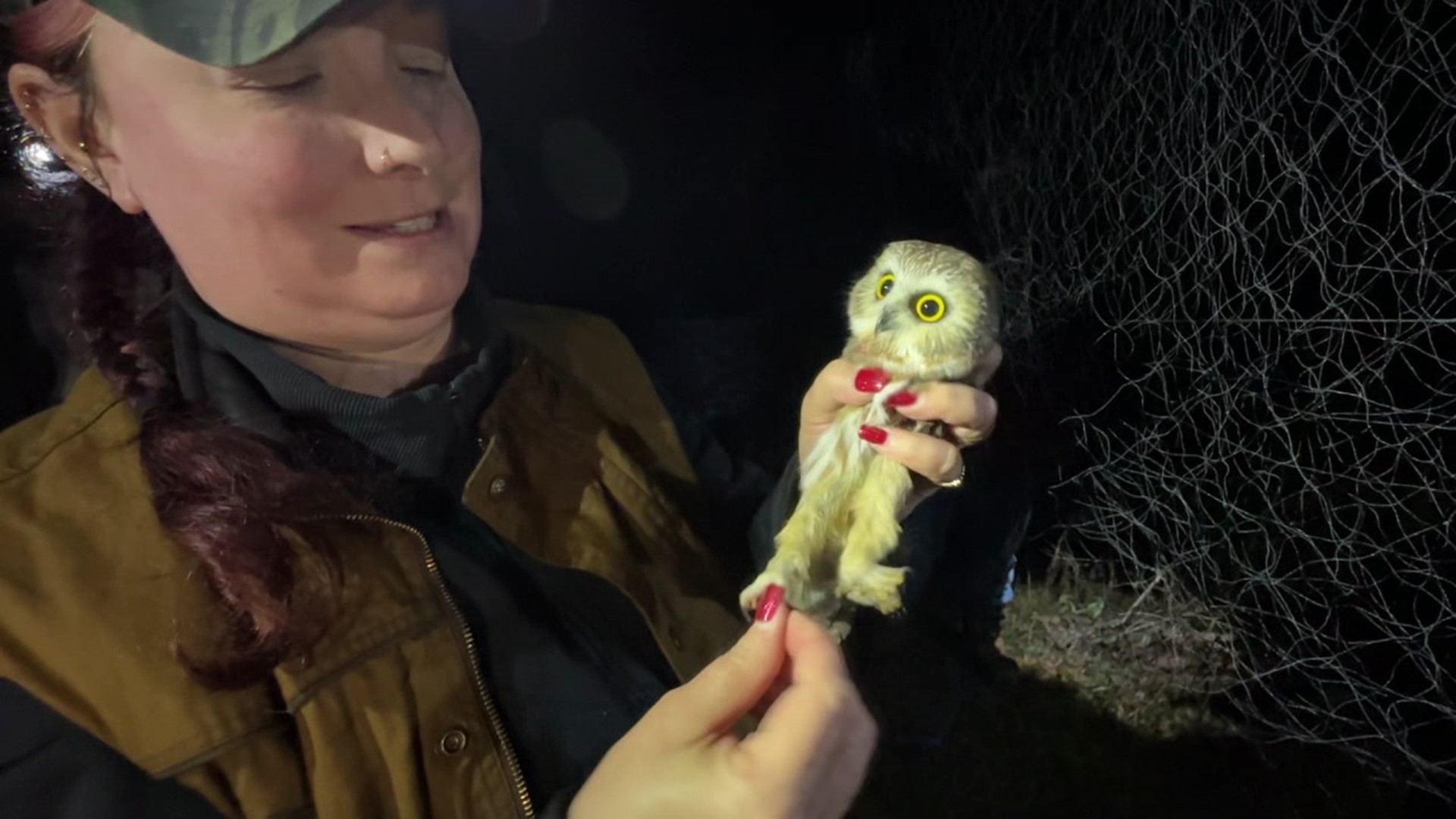LACKAWANNA COUNTY, Pa. — Under the moonlight, scientists head into Lackawanna State Park for some research on a nocturnal bird of prey you may be familiar with.
The northern saw-whet owl got its claim to fame in 2020 when it hitched a ride from Oneonta, New York, to New York City on the Rockefeller Center Christmas tree.
"The northern saw-whet owls are the smallest owls in Pennsylvania, and they migrate. This is their fall migration time. They're coming through New York and Canada to Virginia," said Mary Ann Bogert, a PhD candidate at Binghamton University.
For this research, nets are put out at night with different calls to help attract these owls—a male mating call to draw in female owls and a female mating call farther back in the woods to attract male owls.
"What we are trying to find out with this research is why female owls are caught more and more each year than males," Bogert explained.
The station is one of 100 around the country conducting similar research to add information to a database.
The researchers have the proper permits to catch and handle these birds.
"It's also important for us to remember to respect nature and do what we can to admire it and not intrude unless you are a trained professional like Mary," Michael Nally said.
A closer look at this owl shows it was banded by this research team the night before, so after a couple of checks, we take it back into the dark to be released.
Another check of the nets reveals another bird that's new to this team and gives us a chance to see something special about these birds under a black light. The team explains that they produce proteins in their feathers that show up in the black light and help to age the bird.
After some more measurements, the birds are set back into the wild on their migration paths.

